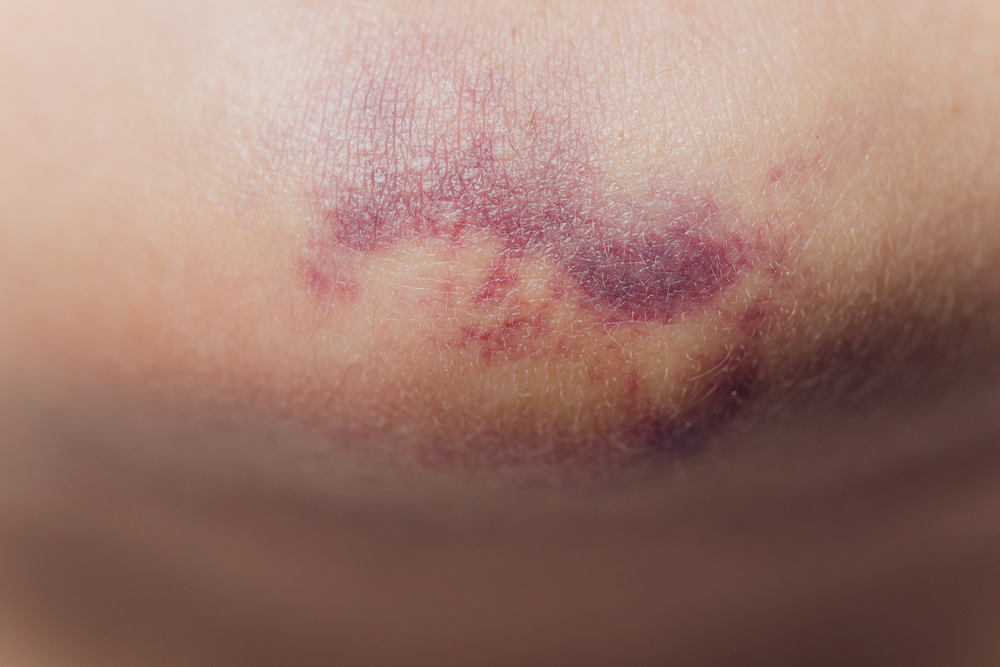

Bruises often occur quickly. They can happen at any age but are most common in older individuals. People who engage in sports and children are more prone to getting bruises since minor injuries or pressure on the skin are often the cause.
The medical term for a bruise is ecchymosis orpurpura. Bruises have a characteristic colour, starting off as red or red-blue and gradually changing to green and then yellow. Bruises usually disappear within 1-2 weeks. Particularly in older individuals, bruises can last longer and develop a brown colour, which is known as senile purpura. Bruises often appear as a spot on the skin, but there can also be accompanying swelling. Sometimes there is pain, especially if there is a larger bleed. Occasionally, pressing on the bruise can help confirm that the cause is bleeding, such as by applying pressure to a nail in cases of bruising and bleeding under the nail (which can be painful).
The causes of bruises can be varied and are often apparent. Blows, pressure, and injuries to the skin cause small bleeding under the skin and subsequent bruising. Typically, this occurs on the arms and legs. The blood leaks into the skin and does not return to the bloodstream. As a result, the haemoglobin in the blood quickly takes on a bluish colour, indicating a lack of oxygen in the blood.
In addition to skin injuries, bruises can sometimes occur spontaneously. In such cases, one might consider whether the person has an increased tendency to bleed in other ways, such as during dental treatments, nosebleeds, or menstruation. It is important to determine whether there is an underlying condition causing increased bleeding or if the person is taking medications that increase bleeding tendencies. Examples of such medications include anticoagulants, anti-inflammatory/NSAIDs like ibuprofen, corticosteroids, or antidepressants. If there is a deficiency in the production of blood components, such as platelets, it can lead to increased bleeding. Various blood disorders, including congenital ones, can make a person more prone to bleeding. Increased consumption of alcohol, garlic, and ginger may also contribute to an increased tendency to bleed, as can deficiencies in certain vitamins (K and C). In older individuals, the subcutaneous fat decreases and the skin's cushioning properties weaken, making minor injuries more likely to cause bleeding and bruising. As people age, the blood vessels themselves also become more fragile. Prolonged use of corticosteroid tablets can thin the skin and make the blood vessels more fragile. Infections can also cause bleeding in the skin, as seen in meningococcal infections (meningitis).
Bruises themselves do not typically require treatment since they resolve on their own after a short period. If there is an accompanying injury, it may be appropriate to apply cold therapy to the area, such as with ice, and reduce swelling with a compression bandage or elevation of the affected body part. The underlying cause of the bruising may need to be investigated and treated in some cases.
Vasculitis, inflammation of blood vessels, can resemble bruises. It often presents as small sores or palpable elevations on the skin, most commonly on the lower legs. Permanent small blood vessels (telangiectasia) can also be mistaken for bruises. Inflammation in the deeper layers of the skin (panniculitis/erythema nodosum) can be confused with bruises.